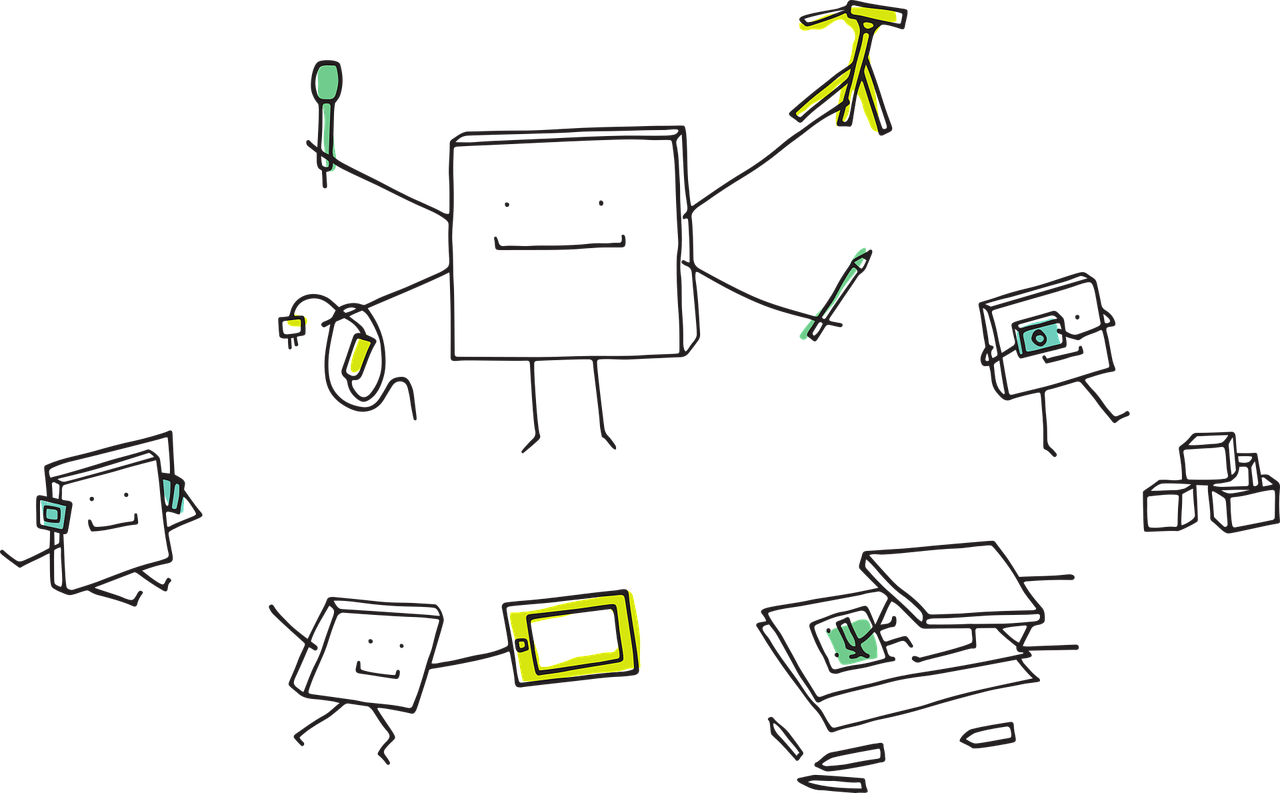There’s a reason why managing several projects at once is a highly sought-after skill in project management: the sheer thought of dealing with so many important tasks can be an anxiety-inducing experience for many project managers, and even the most skilled professionals can find themselves struggling.
CONTENT
However, it is becoming progressively less common for project managers to manage only one project at a time.
Successfully managing multiple projects at once requires extra skills and tools besides those commonly required to manage a single project.
Even if projects vary widely, the right tools can transform and simplify workflows and avoid unnecessary complexities.
Let’s discuss how to best manage multiple projects at once in this article.
5 strategies for managing and monitoring multiple projects
1. Plan before starting anything
When managing several projects, you should leave nothing to chance. It’s especially important to create a project plan ahead of time for every possible scenario and have contingency plans in place in case things go wrong.
The project manager must set realistic expectations for themselves and the team so that they are more likely to succeed on all fronts.
Also, the key to managing multiple projects is to plan in an integrated way while also preventing conflicts between projects.
Integrated planning allows you to catch potential problems early and try to reschedule.
Here are some suggestions:
- Spread out starting dates for similar projects: in particular if different projects involve the same workgroup, it can help to spread out the start and completion dates for each one so that people won’t need to finish everything at the same time.
- Pay attention to dependencies: plan the dependent project donly after the scheduled completion date of the first one.
- Tick off duplicate tasks: if you submit the same work in two different projects, it’s critical to make sure this gets done in time to keep both projects on track.
2. Prioritize activities
Knowing how and when to prioritize activities in a project is extremely important.
The project manager must know which activities will have the greatest impact on the organization and prioritize them effectively.
A helpful approach can be to evaluate priorities based on four levels: important, not important, urgent, and not urgent.
Here are a few examples:
- Important and urgent: arrange an early meeting to begin the new project;
- Important, but not urgent: write a project management report.;
- Urgent, but not important: reassure your client that the project is on schedule;
- Non-urgent and unimportant: sending the latest report to all stakeholders outside the project team.
If there is something important and urgent, it should be taken care of before anything else.
Important but not urgent tasks should be scheduled for a later date.
Urgent, but not important tasks can be delegated by the project manager to someone else on the project team who possesses the skill to take care of it.
Non-urgent, non-important tasks should be re-examined to understand why they are being done.
For instance: if no one reads the report, why is time spent creating and sending it? It may be important to someone you don’t know about, else the activity may be deleted altogether.
3. Adjust your plan through regular reviews
There is no point in holding to the original plan no matter what happens.
To be flexible is an immensely important attribute that an effective project manager must have.
Particularly when managing multiple projects, there are several unknown variables that sometimes can flip the entire perspective upside down.
Therefore, it is important to hold regular review sessions where you update the original plan.
Sticking to a rigid plan without seeing the bigger picture could mean more mistakes and bottlenecks in the future.
4. Communication with your team members
An effective communication is, arguably, one of the most important aspects of project management.
That’s why we wrote an entire article on how to communicate with your project team.
If you don’t want to read the whole article, just know that communication problems in teams arise from a lack of visibility to what they are doing, what their colleagues are doing, and what cross-functional stakeholder are doing.
When you don’t have insights into the work others are accomplishing, you miss the context to understand why deadlines are happening, why changes are being made, whether priorities remain the same, and how the project is progressing.
The best way to communicate openly and consistently is to find a space where each and every thing is shared with the entire team.
When managing multiple projects, this becomes even more relevant, as the team can learn about any potential problems and discuss their solutions before serious project delays occur.

5. Use all tools available
Even the best project manager needs help.
Project management tools can be very beneficial for everyone and come with many features that make it extremely easy to manage multiple projects at once.
Using good project management software, you can run day-to-day tasks, track team progress, monitor assigned projects and assignments, and much more at the click of a button.
Also, when project information is spread across multiple files and scattered across different platforms, managing several projects can be difficult.
A project management tool creates a hub for documentation, feedback and communication by providing stakeholders with clarity on end results, deadlines and expectations.
This help provides the project manager with more time to refine plans and ensure that each assigned project stays on track and is completed successfully.
Working on several projects at once requires utmost dedication and skills.
Without good strategies for managing several projects at once, it’s hard to know what work to prioritize, how to help the team manage the workload and get everything done on schedule.
However, probably the most important tip is to choose and use a good project management software.
Try TWProject for free by clicking the button below.




